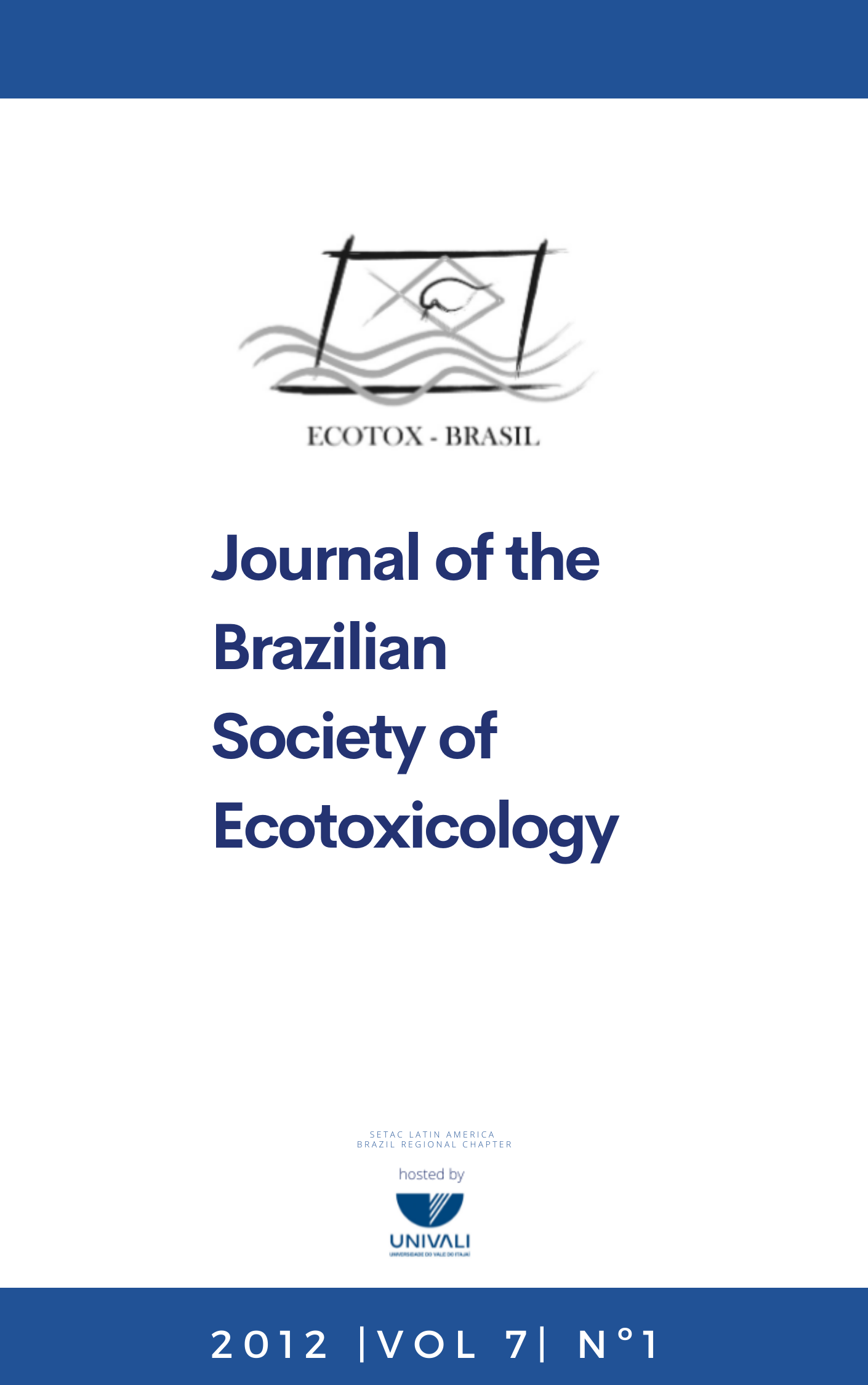Genotoxicity of Selected Pesticides in the Hen’s Egg Test for Micronucleus Induction
Abstract
The presence of toxic substances in natural environments can potentially cause several alterations in organisms. Therefore, it becomes important the use of tests in order to evaluate the potential genotoxicity of these substances. In this work it was used the frequency of micronuclei in hen’s embryos as toxic end point for evaluation of the genotoxic effect of the substances tested. Fertilized eggs of Gallus gallus domesticus were collected and incubated during eleven days. In the eighth day of incubation, the agrochemicals quinclorac, fipronil and pyrazosulfuron-ethyl, used in the irrigated rice culture, were injected and in the eleventh day, a sample of blood was taken. The analysis included the calculation of the frequency of micronuclei for 1000 polychromatic erythrocytes (PCE), to measure genotoxic damages. To evaluate the cytotoxic damages, the ratio between polychromatic erythrocytes and normochromatic erythrocytes was calculated (PCE/NCE). Results demonstrated that the technique is simple, sensible and of easy application. For the dose of 2.7 mg/kg the insecticide fipronil showed significant effect for the presence of micronucleus as well as in the dose of 104.2 mg/kg for the pyrazosulfuron-ethyl herbicide. The herbicide quinclorac did not show significant effects in none of the tested doses. We therefore conclude that these agrochemicals should be better studied with regard to its damaging potential to the environment and to human beings.
Key words: Pesticides, genotoxicity, micronucleus, hen’s embryos.
Downloads
How to Cite
Issue
Section
License
Copyright © 2006 ECOTOX-Brasil
Copyright notice: It is a condition for publication that manuscripts submitted to this journal have not yet been published and will not be simultaneously submitted or published elsewhere. By submitting a manuscript, the authors agree that copyright for their article is transferred to the Sociedade Brasileira de Ecotoxicologia (ECOTOX-Brasil) if and when the article is accepted for publication. The copyright covers the exclusive rights to reproduce and distribute articles, including reprints, photographic reproductions or any other reproduction of a similar nature, including translations. No part of this publication may be reproduced, stored in a retrieval system or transmitted in any form or by any means, electronic, mechanical, photocopying, recording or otherwise, without permission of the publisher.
Notice: While every effort is made by the EEC, editors and editorial board to see that no inaccurate or misleading data, opinions or statements appear in this journal, they wish to make it clear that the contents of the articles and advertisements published herein are the sole responsibility of the contributors or advertisers concerned. Accordingly, the EEC, the editorial board and editors and their respective employees, officers and agents accept no responsibility or liability whatsoever for the consequences of any inaccurate or misleading data, opinion or statement.




